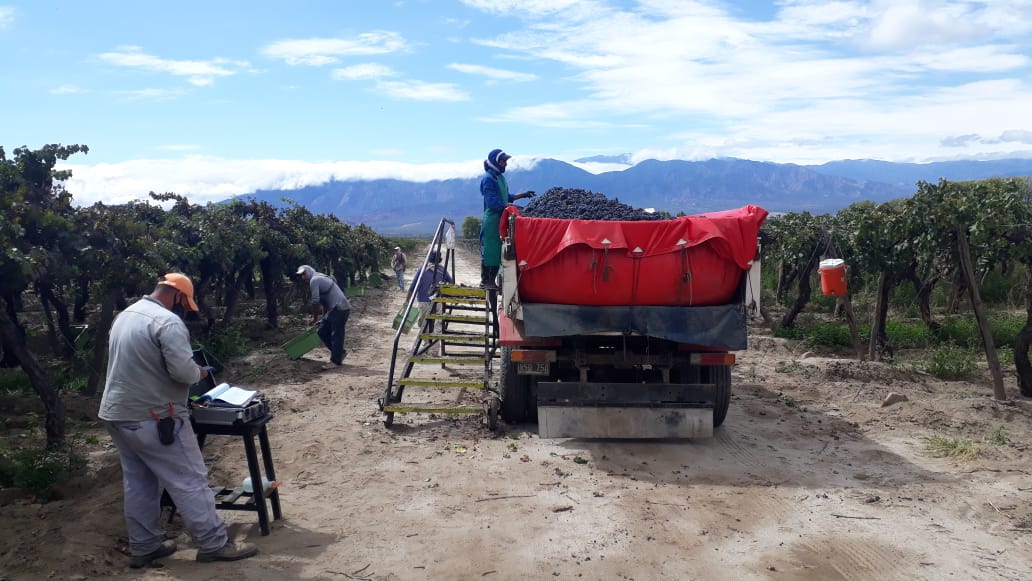Cuyo and Mendoza
Northern Argentina
Southern Argentina
For most of Argentina’s wine regions, 2021 was a cooler vintage which brought challenges but also offered the potential for fresher wines. Covid restrictions were still in place for the 2021 vintage in Argentina although, after their experience of 2020, wine producers were much better equipped to deal with the extra challenges. However a labour shortage proved a problem. Take a look at the full breakdown of the 2021 vintage in Argentina in our special 2021 Harvest Report with interviews from winemakers around the country.
The full Argentina Vintage Guide (from 2000 to 2021) is available here.
Cuyo & Mendoza 2021 Harvest Report
Home to over three quarters of the country’s wine regions, Mendoza and the Cuyo region (San Juan and La Rioja) all experienced a similarly cool and long vintage. The season started with spring frost, which impacted some vineyards, mainly in Eastern Mendoza and San Juan. Eastern Mendoza bore the brunt of the frost, with yield losses of up to 25%, which will have a knock-on impact on bulk wine production and prices there.
Elsewhere, a cooler, rainy summer (with high rainfall especially in February) put back the harvest throughout the Cuyo region, making for a later than normal start for white wines. Furthermore, extra treatments were needed in the vineyard to avoid rot. Those white grapes that were well managed are reported to have greater freshness and lower alcohol.
Red varieties were not affected by the rain as a drier autumn ensued and warm, sunny days brought the vintage back up to normal speed (in fact there was some overlap in the harvesting times of white and red varieties). Extra cloud cover during the summer meant that the maturation was slower at first, preserving greater acidity in the red wines this year.
According to Silvio Alberto, winemaker of Bodegas Bianchi,
During the maturation process we had quite low temperatures, and so we have much more fruit and acidity. I think it’s been an excellent year for white and sparkling wines, as the grapes were slower to be ready for harvesting, and the reds varieties have actually been harvested at the normal time. The quality of the reds is fantastic; they have excellent phenolic maturation but with a lower alcohol content — there’s a good balance between sugar and acidity.”
Reports from San Juan are equally as promising, in particular with the vintage in Pedernal offering good concentration and lower potential alcohol levels.
View this post on Instagram
Northern Argentina Vintage Report 2021
The wine regions in Northern Argentina experienced slightly cooler conditions, although nothing like those reported further south in Cuyo. Winemakers are reporting a more typical vintage 2021 for the Calchaquis Valleys.
According to Francisco Tellechea, agronomist at El Esteco in Cafayate,
Spring was quite normal with very little rainfall and we had good budbreak. We had a dry December and January with lower rainfall than normal, but in February we had twice the normal rainfall. However, it was still only 80mm and so it wasn’t an issue. What it meant was that we had cloudier days, which gave us slightly slower maturation, meaning great concentration and colour.”
View this post on Instagram
Southern Argentina Vintage Report 2021
In southern Argentina, in Patagonia’s Rio Negro and Neuquén regions, winemakers are reporting a relatively dry, windy summer with warm daytime temperatures, and cooler nights. The combination for harvest 2021 has led to wines of good concentration but also fresh acidity and lower pHs.
Further south, in the emerging wine region of Chubut, there was no late frost and a long growing season. Sofia Elena from Contra Corriente explains
This year we had really nice maturity. The wines will be much more aromatic this year, although we might lose a bit of acidity. Compared to 2020, which was really cold, for example. But that’s what’s nice about Chubut – each vintage is very different.”
View this post on Instagram
